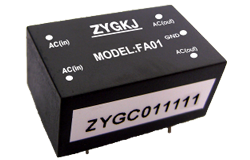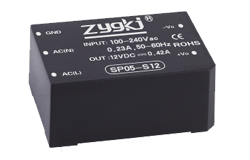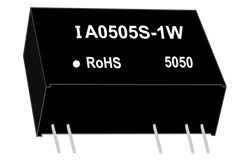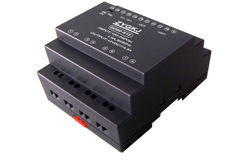Nachrichten
Bidirectional DC-DC Converter: Enhancing Power Flow Flexibility in Energy Systems
Autor: ZYG Leistungsmodul Time: 2023-7-15
Title: Bidirectional DC-DC Converter: Enhancing Power Flow Flexibility in Energy Systems
Introduction
In recent years, the growing demand for renewable energy sources and the increasing integration of distributed energy resources in power systems have posed significant challenges in managing power flow and ensuring grid stability. Bidirectional DC-DC converters have emerged as a promising solution to address these challenges by enhancing power flow flexibility in energy systems. This article explores the functionalities and benefits of bidirectional DC-DC converters, shedding light on their potential to revolutionize the energy landscape.
1. Understanding Bidirectional DC-DC Converters
A bidirectional DC-DC converter is an electronic device that facilitates the transfer of power between two DC voltage sources with varying voltage levels. It serves as a crucial interface between different energy storage systems, renewable energy sources, and power grids. Unlike unidirectional converters, bidirectional converters allow power flow in both directions, enabling efficient energy management and enhancing system flexibility.
2. Operating Principles
The bidirectional DC-DC converter operates by using high-frequency switching devices, such as power transistors, to control the power flow. It consists of two converter blocks: a step-up converter and a step-down converter. The step-up converter increases the input voltage to match the higher voltage level of the output source, while the step-down converter reduces the voltage to match the lower voltage level. The bidirectional nature of the converter enables power to flow in either direction, depending on the energy requirements and system conditions.
3. Applications in Renewable Energy Systems
Bidirectional DC-DC converters play a vital role in integrating renewable energy sources, such as solar photovoltaic (PV) panels and wind turbines, into power systems. They enable efficient power conversion and ensure seamless integration of these intermittent energy sources with the grid. The converters allow surplus energy from renewable sources to be stored in energy storage systems, such as batteries, for later use or fed back into the grid when needed.
4. Energy Storage Systems and Microgrids
Bidirectional DC-DC converters are instrumental in energy storage systems, providing efficient energy transfer and management. They enable the charging and discharging of batteries or other energy storage devices at different voltage levels, optimizing the storage system\’s performance. Additionally, bidirectional converters facilitate the connection of microgrids, enabling the exchange of power between renewable energy sources, energy storage units, and the main grid.
5. Electric Vehicle (EV) Integration
As the adoption of electric vehicles continues to rise, bidirectional DC-DC converters offer a valuable solution for EV charging infrastructure. They allow bidirectional power flow between the EV battery and the power grid, enabling vehicle-to-grid (V2G) and vehicle-to-home (V2H) functionalities. Bidirectional converters empower EVs to not only consume energy but also serve as decentralized energy storage units, enhancing grid stability and optimizing energy utilization.
6. Advantages and Future Perspectives
Bidirectional DC-DC converters offer several advantages, including improved power quality, enhanced energy management, and increased system efficiency. By enabling power flow in both directions, they provide greater flexibility and stability in energy systems. As renewable energy penetration increases and energy storage systems evolve, bidirectional converters will play a pivotal role in enabling a smarter, more reliable, and sustainable energy future.
Conclusion
Bidirectional DC-DC converters hold immense potential for enhancing power flow flexibility in energy systems. Their ability to enable bidirectional power transfer between various energy sources, storage systems, and grids opens up new possibilities for efficient energy management, renewable integration, and EV charging infrastructure. As the energy landscape continues to evolve, bidirectional converters will undoubtedly play a crucial role in shaping a greener and more resilient energy ecosystem.
Vorherige: Introducing the SPM Series: AC DC Converter for Optimal Power Conversion
Nächste: China AC-DC Power Supply wholesale: Efficient and Reliable Source of Electrical Energy
relevante Information
-
2023-5-27
AC DC Converter Module: What You Need to Know
An AC DC converter module is an essential component in many electronic devices. It is used to convert alternating current (AC) to direct current (DC), which is required for proper functioning of electronic circuits. In this article, we will discuss everything you need to know about AC DC converter modules, including their working principle, types, and applications. Working Principle of AC DC Converter Module The working principle of an AC DC converter module is based on the principle of rectification. The input AC signal is first converted into a pulsating DC signal using a rectifier circuit. The pulsating DC signal is then filtered using a capacitor, which removes any residual AC components and produces a stable DC output voltage. Types...
Einzelheiten anzeigen -
2023-5-2
Understanding AC-DC Power Supply: A Comprehensive Guide
An AC-DC power supply is a device that converts AC voltage into DC voltage. This type of power supply is essential for many electronic devices that require a stable and reliable source of DC power. In this guide, we will take a comprehensive look at AC-DC power supplies, including their types, specifications, applications, and common issues. Types of AC-DC Power Supplies There are several types of AC-DC power supplies, each with its own unique characteristics and applications: 1. Linear Regulated Power Supplies: These power supplies use a linear regulator to reduce AC voltage to a stable DC voltage. They are simple, reliable, and inexpensive but generate a lot of heat and are not efficient. 2. Switching Power Supplies: These power...
Einzelheiten anzeigen -
2023-4-24
How to Build an AC-DC Power Supply
Introduction An AC-DC power supply is an essential component in many electronic devices, providing a constant and reliable source of power. These power supplies can be used in a wide range of applications, from powering small electronic devices like smartphones to larger appliances like refrigerators and air conditioners. Building one of these devices is a relatively simple process, and can be done with some basic knowledge of electronics and a few common components. Step 1: Choose the Transformer The first step in building an AC-DC power supply is to choose an appropriate transformer. The transformer will convert the AC voltage from the wall outlet into a lower voltage that can be used by the power supply. The voltage needed will...
Einzelheiten anzeigen -
2023-5-21
How to Convert 110V AC to 12 Volt DC
If you have an electronic device that requires 12 Volt DC power but only have access to 110V AC power, you will need to convert the AC power to DC. This can be done with the use of a power supply or adapter. In this article, we will guide you through the steps on how to convert 110V AC to 12 Volt DC. Step 1: Determine the DC Voltage Required Before attempting to convert the AC power to DC, you must first determine the DC voltage required by the device you wish to operate. Most electronic devices will have the required voltage printed on the label or in the user manual. Make sure to take note of this voltage before...
Einzelheiten anzeigen -
2023-5-18
Efficient AC to DC Converter: Transforming 120V AC to 12V DC with Superiority
Introduction: Converting AC (alternating current) to DC (direct current) is crucially important for various electronic devices to function properly as most electronics run on DC supply. The majority of commonly used electronic devices operate on 12V DC. Therefore, transforming 120V AC to 12V DC has significant importance in the technical world. An efficient AC to DC converter reduces wastage of energy and improves the performance and longevity of the electronic device. The AC to DC conversion process affects the circuit performance, security, and environmental factors. In this article, we will be discussing efficient AC to DC converters and how they could serve numerous industries by transforming typical 120V AC to 12V DC with superiority. Efficiency: Efficiency is crucial in identifying...
Einzelheiten anzeigen -
2023-6-16
AC DC Power Supply Module: A Comprehensive Guide
An AC DC power supply module is an electronic device that delivers a regulated DC voltage from an AC input voltage. This type of power supply is widely used in electronic equipment, ranging from small portable devices to large industrial machinery. In this article, we will discuss the workings of an AC DC power supply module, its applications, and the different types of power supply modules available in the market. Working of an AC DC Power Supply Module: An AC DC power supply module consists of three main components: the transformer, rectifier, and filter. The transformer is used to step down the AC input voltage to a lower voltage level. The rectifier converts the AC voltage into DC voltage, and...
Einzelheiten anzeigen


















